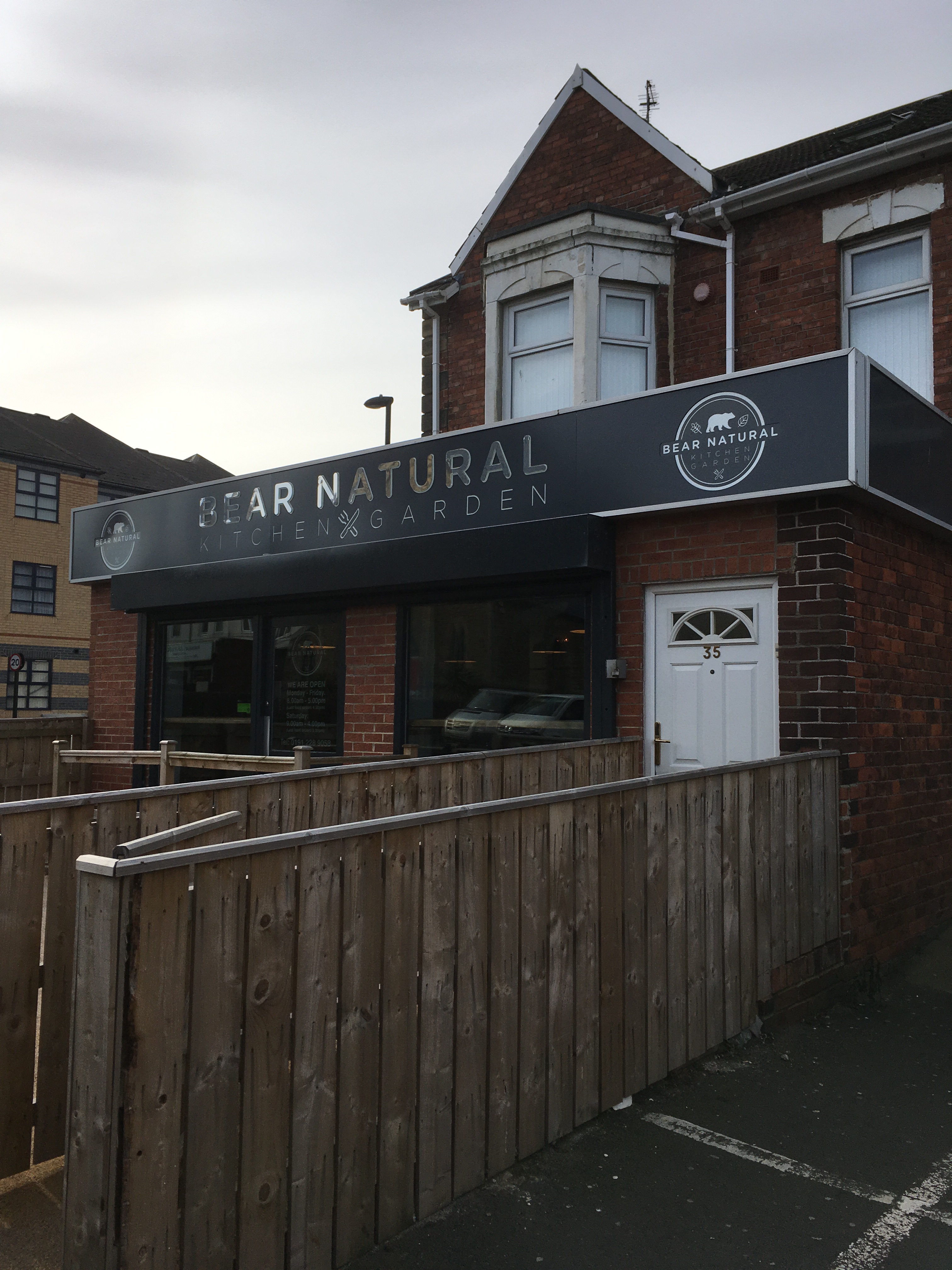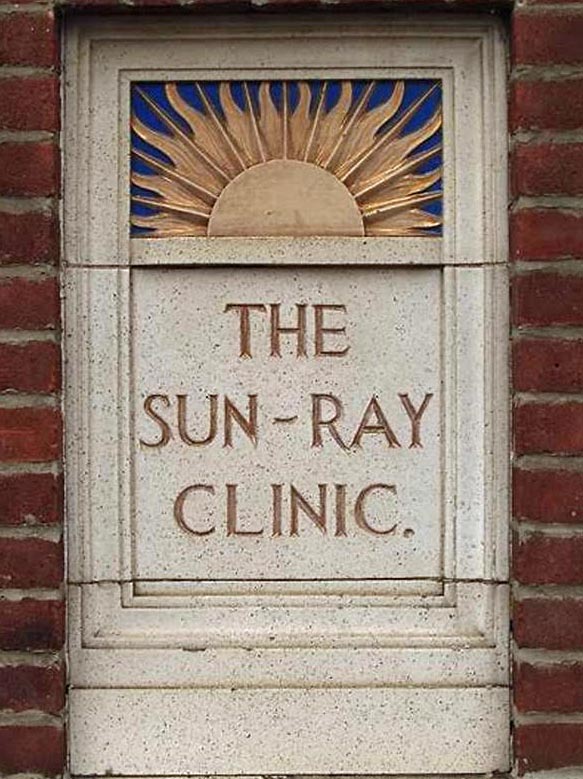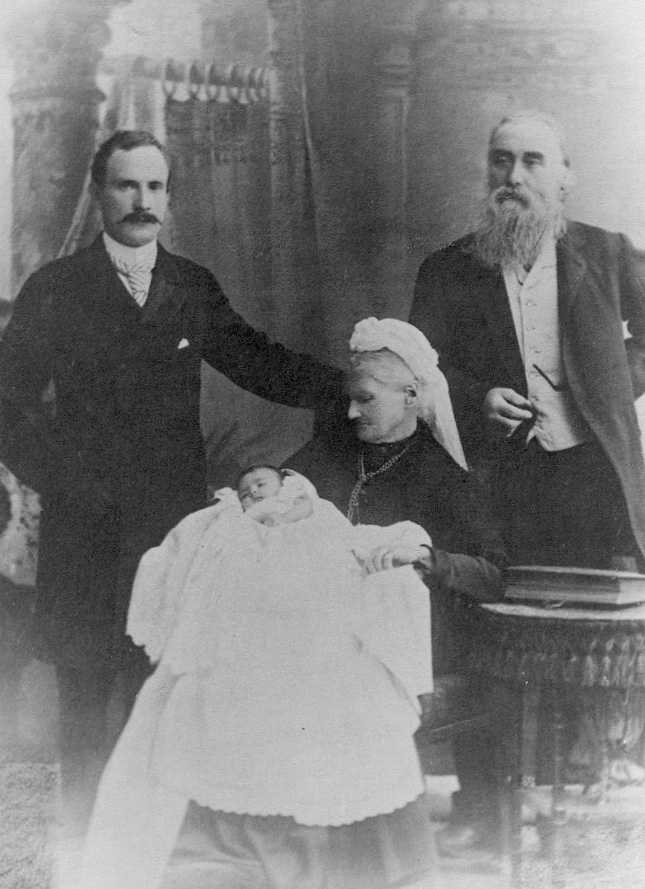Heading up the left side of Heaton Road from its junction with Shields Road, you’ll soon come to Heaton Road Surgery, a health centre in modern premises at number 15-19. Continuing north, you may remember the doctor’s that until quite recently stood at number 39, now an extension to the dental practice next door. And people with long memories may remember many more surgeries not to mention associated businesses, such as pharmacies, on the stretch of Heaton Road between Shields Road and the railway line: you could call it Heaton’s answer to Harley Street.
We wondered why there was such a concentration in this area and whether we could find out more about some of the surgeons and physicians who practised from the last quarter of the nineteenth century through to the 1920s and beyond. Our research revealed a fascinating array of characters, whose stories stretch far beyond Heaton.
Pioneer
The first doctor to set up on Heaton Road appears to have been Samuel Aaron Welch, who was born in Kiniver, Staffordshire in c1855, the son of a ‘chemist and master druggist’. Samuel trained at Queen’s College, Birmingham, qualifying in 1879 and coming to Heaton after a stint at West Bromwich District Hospital. Like many doctors of his time, his surgery was in his home ‘Lawn Villa’ at 35 Heaton Road, which, at the time of writing, is Bear Natural, a restaurant.

Dr Welch served the people of Heaton for over 30 years until his early death in 1913, aged 58.
Dynasties
Another early Heaton doctor was Scot, Frank Russell. By 1891, aged 28, he was living with his wife, Annie, and young children William Kerr and Jessie at 41 Heaton Road, just a few doors down from Dr Welch. By 1901, the family had a lodger, fellow Scot, Dr Archibald Livingston, the son of a Govan grocer. Dr Livingston and his wife had four children, Duncan Cameron and James Campbell, Jean Elizabeth and Alistair. The older brothers eventually followed their father into medicine and into the practice, by now at 2 Rothbury Terrace. Duncan died, aged only 32, in 1938, his father, Archibald, by now living in retirement in Jesmond, three years later.
Frank Russell practised at 41 Heaton Road, also known as ‘Stannington House’, until the mid 1920s and by the time he retired his son, William, and William’s wife, Eleanor, had inherited the practice.

Both William and Eleanor qualified from the University of Durham Medical School, William with First Class Honours, and alongside the Heaton Road surgery, they also worked as actinotherapists (treating patients using ultraviolet light) and electrotherapists (using electrical energy in medical treatment) at 50 Jesmond Road. They both wrote extensively on the use of ultra violet light, which was at that time a new therapy, thought to be beneficial for many skin conditions, as well as rickets. Their book ‘Ultra-Violet Radiation and Actinotherapy’, first published in 1926 went into several editions. In 1926, Eleanor also wrote an article ‘The planning and equipment of an ultra-violet clinic’ and, in 1928, William ‘Outline of the use of ultraviolet in dermatology’ for an American journal.
At this time both Eleanor and William were involved with The Sun Ray Clinic on Brinkburn Street in Byker, opened by Lady Parsons on 2 December 1926, with additional foundation stones laid by the wives of local retailers, Herbert Pledger, James Parrish and Fredric Beavan, along with Mrs James Howard. (Can anyone tell us who James Howard or his wife was?)

The clinic was among the first of a network of Sun Ray Clinics established all over the country which, until as late as the 1960s, treated children in the belief that exposure to ultraviolet rays would cure all manner of diseases and conditions and generally make weak children stronger. Eleanor was Honorary Physician of the Byker clinic and William Honorary Consultant Actinotherapist.

Byker’s Sun-Ray Clinic building still stands on Brinkburn Street. Although sun lamp treatment had ceased long before, the clinic itself didn’t close until 1991, with a party for some of those who had been treated there. We’d love to hear from anyone with memories of it.
The couple’s expertise in this growing area of medicine served them well because the couple didn’t stay in Heaton long. They soon operated a practice on Harley Street in London. In 1930, William became a Freeman of London in the Company of Apothecaries. He died in 1941. Eleanor died in 1984 in Victoria, Australia.
Canadian MP
Another of Heaton Road’s doctors, Michael Clark, was born in 1861 in Belford, Northumberland, the son of a grocer. In 1882, while a medical student at the University of Edinburgh, he visited Canada to marry Elizabeth Smith, whom he had known before her family emigrated from Northumberland.
By 1895 he was living and working in Heaton. The 1901 census shows the couple living at 52 Heaton Road, also known as ‘Hawthorn House’, now demolished, with their four sons aged between 18 and three. Michael was also a member of the local School Board. However, the following year, apparently both for health reasons and to access better opportunities for their sons, the couple joined Elizabeth’s family in Canada.
Because his medical qualifications weren’t fully recognised in Canada, Clark turned his hand to farming, buying land in Alberta. Soon afterwards, he sought election to the Canadian parliament as a Liberal candidate. Initially, he was unsuccessful but in 1908, he was elected member for Red Deer, Alberta and he was soon acclaimed as the ‘finest public speaker in Western Canada’.
Clark was a supporter of women’s suffrage and a supporter of free trade. But after the outbreak of WW1, his politics were deemed to have shifted dramatically as he placed loyalty to Britain above all else and, in 1917, he became one of the first Western Canadian Liberals to support conscription. In 1919, Clark notably defended the tradition of hereditary titles and the ‘splendid place’ of the British nobility in the war. In 1921, after disagreements in his local party, Clark stood as a Liberal in the Saskatchewan riding of Mackenzie, but was defeated by a Progressive. He subsequently retired from politics. Predeceased by his wife and two sons, he died at his Belford Glen Ranch in 1926 and was buried in Olds, Alberta. Surprisingly, although he has a Wikipedia page, we haven’t yet tracked down a photograph of him.
Big Game Hunter
John George Ogilby Hugh Lane was born in Bishop’s Castle, Shropshire on 16 January 1872 and educated at Haverfordwest Grammar School before following many members of his family into medicine. His maternal grandfather was a doctor; his paternal grandfather, Alexander Lane, a surgeon in the Royal Navy; his brother also went into medicine and his first cousin was the celebrated surgeon, Sir William Arbuthnot Lane. Another noteworthy aspect of John’s background is that his parents were first cousins, as were his maternal grandparents.

John completed his medical training Guy’s and St Thomas’s Hospital and the University of Durham. He then spent four years in India ‘shooting big game and travelling’ according to a 1905 publication ‘Northumberland at the Opening of the XX Century: contemporary Biographies’ There he apparently ‘came into contact with some of the principal Indian chiefs, including the Maharajas of Patiala and Faridkot’. He married the Ranee of Sarkarpur, Oudh, daughter of the late Rajah of Sarkarpur.
In British census records, John’s wife’s name is given as Eva Collins. She is recorded as having been born in India in 1869 and the couple married in 1894. Their first daughter, Leila Patricia Sarkan , was born the following year in Kasauli, India, followed in 1896 by Vida Beryl Sarker.

By 1901 the family were living at 43 Heaton Road, next door to Scots, Drs Russell and Livingstone.

In 1899, a third daughter, Eva Millicent was born in the north east, in Hetton le Hole in 1899 followed by a son, John Stanley Sarker in 1904 and another daughter, Eva W, in 1906. Lane continued to practise in the north east until about 1906. But on 15 July 1907, aged only 35 years old, he died in Sarkarpur, Lucknow Division, India. All we know from his death certificate is that a well collapsed on him. Eva died in 1937 in Kent.
Service
The above were some of the more colourful medics to have graced Heaton Road but many others gave years of service to their Heaton patients, including in the early years:
Joseph James French at 2 Heaton Road before WW1;
John J Bennetts (1862-1922) at 45 Heaton Road (Neshan House) and Park View House. In 1890, he contributed a paper on influenza to ‘The Lancet’;
Robert William Nevin (1878-1945) at 31 Heaton Road;
Frederick Robert Henry Laverick (1882–?) of 41 Heaton Road and Woodbine Villa;
Harry Hyman Goodman (Hawthorne House);
William Thompson Hall ( 1869-1934) of 12 Heaton Road and later 276 (Craigielea);
George Smith Sowden (1883-1929) born in Madras; author of ‘A case of veronal poisoning’ in the British Medical Journal, 1910. Veronal was the brand name of a barbiturate, at first considered safe. Dr Sowden’s was one of the earliest reports indicating its dangers;
Robert Younger
Alfred Herbert Peters (1878-1924) at 44 Heaton Road;
Harry Rochester Smith (1887-1936) at 38 Heaton Road;
James Matthews at 36 Heaton Road
David Grieve at 17 Heaton Road
Colin McCulloch at Woodbine Villa;
Jabez Percival Iredale (1868-1957)
The only reason we can find for so many medical practices being located at the bottom of Heaton Road is that originally Heaton’s largest houses, those which could accommodate both living quarters and surgery space, were situated there. Nowadays general practitioners usually operated in groups from modern purpose-built premises. Heaton Road Surgery is no different but it’s still a reminder of ‘Heaton’s Harley Street’ and its fascinating array of medical practitioner.
Can You Help?
If you know any more about any of the people or places mentioned in this article, or have photographs you’d like to share, we’d love to hear from you. You can contact us either through this website by clicking on the link immediately below the article title or by emailing chris.jackson@heatonhistorygroup.org
Acknowledgements
Researched and written by Chris Jackson of Heaton History Group. Thank you to Ted Lane for photos and additional information about John and family. And to Arthur Andrews for finding ‘Northumberland at the Opening of the XX Century: contemporary Biographies’ .

Thanks Chris …facinating piece …one character missing from the ‘cast list’ is the famous Dr Dagger who had a practice between Rothbury Tce and Simonside Tce on Jesmond Vale Tce …my father was one of his patients .
Brian
________________________________
Dr Wolfe in the 40s and 50s
Our family doctor for three generations was Harry Hyman Goodman (Hawthorne House); this section of the road (just before the railway lines) was demolished and a local government building with a health center combined took its place. Dr Goodman was close to retirement when he was attending to me, and often we would be seen by his young perky partner Dr Ashman, who continued to practice from that location until the early ‘nineties at least. Both were typical ‘good old fashioned’ doctors who spent almost as much time making house-calls as practicing in their surgeries. My grandparents, and my parents, all spoke incredibly highly about Dr Goodman, and I have to agree with them: he was exemplary; as was his successor Dr Ashman, who continued to tend to my family, as well as me during my times in Heaton.
BTW: despite travelling North you are going down Heaton Road from Shields Road and up from the Corner House; which is contrary to facts but how it’s always been as it’s a hill.
If anyone wants to share their experiences of working for or using the NHS, there is a brilliant oral history project, The NHS at 70: the Story of Our Lives, running locally and nationally. Information can be found here: https://www.nhs70.org.uk/
Thanks, Gill. That looks really interesting.
When going to Chillie Road School, opposite Heaton Park, with my cousin, spotted a large corner house with a polished brass plaque. The Doctors names thereon, namely Doctor DAGGER and Doctor WOLFE. Wow what a nervous laugh we both had.
Re previous historical email, namely Doctor DAGGER and Doctor WOLFE, this was during the mid 195Os.
Heaton Railway History. A fair number of children who attend Chillingham Road School during the 195Os to early 196Os had fathers that worked on the Railway, either at Walkergae Railway Workshops (Just next to Walkergate Railway Station, Now long gone) or Heaton Steam Engine Sheds or Newcastle Central Railway Station. EBOR Street RICHARDSON etc, Street near Chillingham Road school were fairly large Railway employee rented House during the 195Os. Railwaymen of course always had first and foremost preference in those days and you had to have verifiable strict WORK and Social references if you had any chance of getting offered one of these fine, sought after then Railway Houses.
An email from Anne Fletcher: Regarding the photo of Stannington House in the above article, I noticed the door to 41a which to me looked very like the basement surgery I attended from the 1940s which was quite a long walk from our home in Warton Terrace. As far as I remember there were two doctors – Dr Bell and Dr Reay. The waiting room had watercolours on the wall and a glass case with a stuffed bird or animal! There was also a dispensary off the corridor. The last doctor I saw was a Dr Brown in 1963 before we moved from Heaton. Perhaps someone else may recall this surgery?